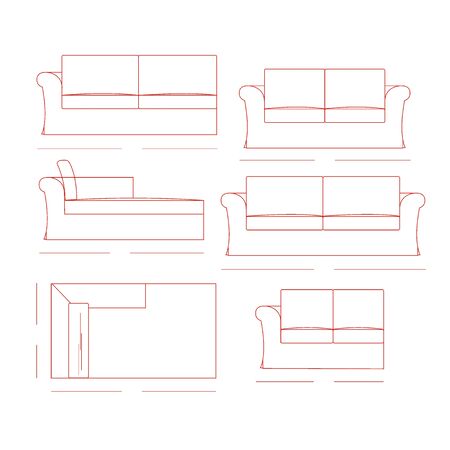Embracing Heritage with a Contemporary Twist
Modern British interior design is renowned for its skillful blend of heritage and innovation. At the heart of this approach lies a respect for classic architectural elements such as cornicing, sash windows, and original fireplaces—features that pay homage to Britain’s rich history. Rather than erasing these details, contemporary designers highlight and preserve them, seamlessly integrating modern comforts and technologies. The result is an interior that feels both timeless and current.
Traditional motifs like tartan textiles, William Morris prints, and antique brass fixtures are thoughtfully reimagined alongside sleek furniture, minimalist lighting solutions, and smart home systems. This harmonious fusion creates spaces that are inviting yet practical, combining the warmth of British tradition with the efficiency and aesthetics of modern living.
Modern British interiors often employ a neutral palette, allowing period features to shine while providing a versatile backdrop for colourful accents or contemporary artwork. The balance between old and new extends to material choices as well; aged oak floors might contrast with polished concrete surfaces or glass partitions. Ultimately, it’s this distinctive marriage of character and innovation that defines the enduring appeal of British interior style.
2. Colour Palettes: Understated Elegance and Bold Accents
Modern British interior design is celebrated for its masterful use of colour, balancing understated elegance with the confidence to introduce bold accents. The typical British palette often starts with neutral, muted tones—think soft greys, chalky whites, and gentle taupes—that form a calm, timeless backdrop suitable for any period property or contemporary flat. These shades reflect the British penchant for refined understatement and create a versatile canvas that allows the architecture and furnishings to take centre stage.
However, what truly distinguishes British interiors is the strategic use of vibrant colours as accent features. Whether it’s a deep navy velvet sofa, a mustard yellow armchair, or emerald green kitchen cabinetry, these bolder hues are carefully selected to inject personality and character into the space without overwhelming it. This considered approach creates interiors that feel both sophisticated and inviting, with a sense of individuality that reflects the occupants’ tastes.
| Base Colour Palette | Accent Colours | Typical Application |
|---|---|---|
| Soft grey, off-white, beige | Deep blue, mustard yellow, forest green | Living room seating, feature walls, kitchen cabinets |
| Pale sage, muted blush, stone | Burgundy, teal, burnt orange | Cushions, artwork, rugs |
| Warm taupe, light charcoal | Aubergine, brass/gold metallics | Lampshades, handles, decorative accessories |
This harmonious blend of restraint and flair is distinctly British: interiors rarely feel sterile or overly dramatic. Instead, they exude comfort and poise. The neutral foundations make spaces adaptable for seasonal changes or evolving trends; simply swapping out cushions or throws in fresh accent colours can transform a room without major upheaval. For those seeking to embody modern British style in their home, focusing on this balance between subtlety and statement is key to achieving an authentic look that endures.
![]()
3. Eclectic Furnishing and Layered Textures
One of the most distinctive features of modern British interior design is its eclectic approach to furnishing. This style is rooted in a deep appreciation for both the past and present, seamlessly blending vintage pieces with contemporary furniture. The British are renowned for their ability to curate interiors that feel collected over time rather than designed in a single moment. For example, it is not uncommon to find an antique Chesterfield sofa paired with a sleek, modern coffee table or mid-century lighting fixtures illuminating classic Victorian cornicing.
At the heart of this approach is a respect for craftsmanship and comfort. Whether it’s a hand-stitched armchair found at a local market or a bespoke cabinet made by a skilled artisan, each piece is chosen for its quality and character. This careful selection results in rooms that are not only visually interesting but also deeply comfortable—a hallmark of British homes where relaxation and hospitality are paramount.
Layering textures plays an equally important role in achieving the inviting atmosphere characteristic of British interiors. Designers often combine natural materials such as wool throws, linen cushions, velvet upholstery, and hardwood floors to create depth and warmth. Patterned rugs, soft drapery, and tactile accessories like knitted pouffes or embroidered cushions add further dimension. The result is a lived-in look that feels welcoming rather than staged—a space that invites you to sit down with a cup of tea and truly unwind.
4. Natural Light and Cosy Atmosphere
One of the most distinctive features of modern British interior design is the careful balance between maximising natural light and cultivating a warm, inviting atmosphere. British homes often contend with overcast skies and shorter daylight hours, making clever architectural adaptations essential for drawing in as much natural light as possible. Bay windows, skylights, and glass extensions are popular solutions that flood interiors with daylight while preserving privacy.
Architectural Adaptations to Enhance Light
| Feature | Purpose | Typical Use in British Homes |
|---|---|---|
| Bay Windows | Increase incoming light and offer expansive views | Common in Victorian and Edwardian properties |
| Skylights & Roof Lanterns | Bring sunlight into loft spaces and extensions | Frequently used in kitchen-diners and converted attics |
| Open-Plan Layouts | Allow light to flow unimpeded through spaces | Popular in contemporary refurbishments |
| Bifold or French Doors | Create seamless indoor-outdoor transitions with more glass surface area | Favoured for connecting living areas with gardens or patios |
The Art of Creating Cosiness (“Cosy” Culture)
Despite the drive for brighter interiors, modern British design never sacrifices comfort. “Cosiness”—or “cosy” as it’s known locally—is achieved by layering soft furnishings, using ambient lighting, and introducing tactile elements. Plush throws, velvet cushions, thick rugs, and heavy curtains help retain warmth and create a sense of snug retreat from unpredictable weather.
Clever Lighting Techniques for Warmth
- Lamps: Floor and table lamps with fabric shades diffuse soft light around seating areas.
- Pendant Lights: Hung low over dining tables or kitchen islands for intimate illumination.
- Dimmable Switches: Allow flexible adjustment to suit mood or time of day.
- Candlelight: Real or LED candles add a quintessentially British touch of charm on mantelpieces or side tables.
The British Approach: Balance and Comfort
This harmonious interplay between natural brightness and layered comfort ensures that modern British interiors feel both uplifting and deeply relaxing—an aesthetic rooted in practicality but elevated by warmth and character.
5. Functional Spaces and Smart Storage
One of the defining features of modern British interior design is its clever use of space, particularly in urban homes where square footage is often at a premium. The practical side of British interiors shines through with the integration of built-in storage solutions and flexible, multi-purpose areas that adapt to everyday needs.
Maximising Every Inch
British homes are renowned for their ingenious ways of utilising even the smallest of spaces. Under-stair cupboards, alcove shelving, and window seat storage are not just afterthoughts—they are fundamental elements in British design. These features enable homeowners to keep living areas clutter-free while making the most of every available nook.
Built-In Storage Solutions
From bespoke wardrobes fitted seamlessly into awkward corners to kitchen larders that blend into cabinetry, built-in storage is favoured over bulky freestanding furniture. This approach maintains clean lines and provides a sense of order, aligning perfectly with the British preference for both form and function.
Flexible Multi-Purpose Spaces
Adaptability is another key characteristic, especially as more people work from home or require rooms that serve several functions. Open-plan living areas can be easily reconfigured with folding doors or sliding partitions, allowing a single room to transform from a lounge to a workspace or even a guest bedroom as needed.
Urban Living Essentials
The trend towards smaller city flats and terraces has pushed British designers to innovate further. Modular furniture, such as extendable dining tables and stackable chairs, supports dynamic lifestyles without compromising style or comfort. Every decision is underpinned by the need to balance practicality with aesthetic appeal—a true hallmark of modern British interior design.
6. Connection to Nature: Bringing the Outdoors In
One of the most enduring and beloved aspects of modern British interior design is its celebration of nature, reflecting the national affinity for gardens and green spaces. The British have a time-honoured tradition of incorporating elements from the natural world into their homes, creating an atmosphere that is both calming and invigorating.
Biophilic Design in British Homes
Biophilic design has become a cornerstone in contemporary interiors across the UK. This approach prioritises the inclusion of natural elements—such as house plants, floral arrangements, and organic textures—to foster a sense of wellbeing indoors. Whether it’s a collection of potted ferns on a windowsill or a statement monstera in the lounge, house plants are more than decorative; they are essential to creating a lively, healthy home environment.
Use of Natural Materials
British interiors increasingly favour sustainable, tactile materials that echo the outdoors. Wooden floors, stone worktops, woollen throws, and linen upholstery all contribute to this connection with nature. These materials not only provide visual warmth but also enhance durability and comfort within the home.
Garden Views and Indoor-Outdoor Flow
Many British properties boast direct access to gardens or courtyards, making views of greenery an integral part of everyday living. Modern renovations often prioritise large windows, bi-fold doors, or conservatories that blur the boundary between inside and outside. This seamless integration allows homeowners to enjoy garden vistas year-round—rain or shine—while maximising natural light and ventilation.
In summary, bringing the outdoors in is central to modern British interior design. It reinforces wellbeing, celebrates local horticultural traditions, and ensures that every space—no matter its size—feels fresh, vibrant, and distinctly connected to its surroundings.


